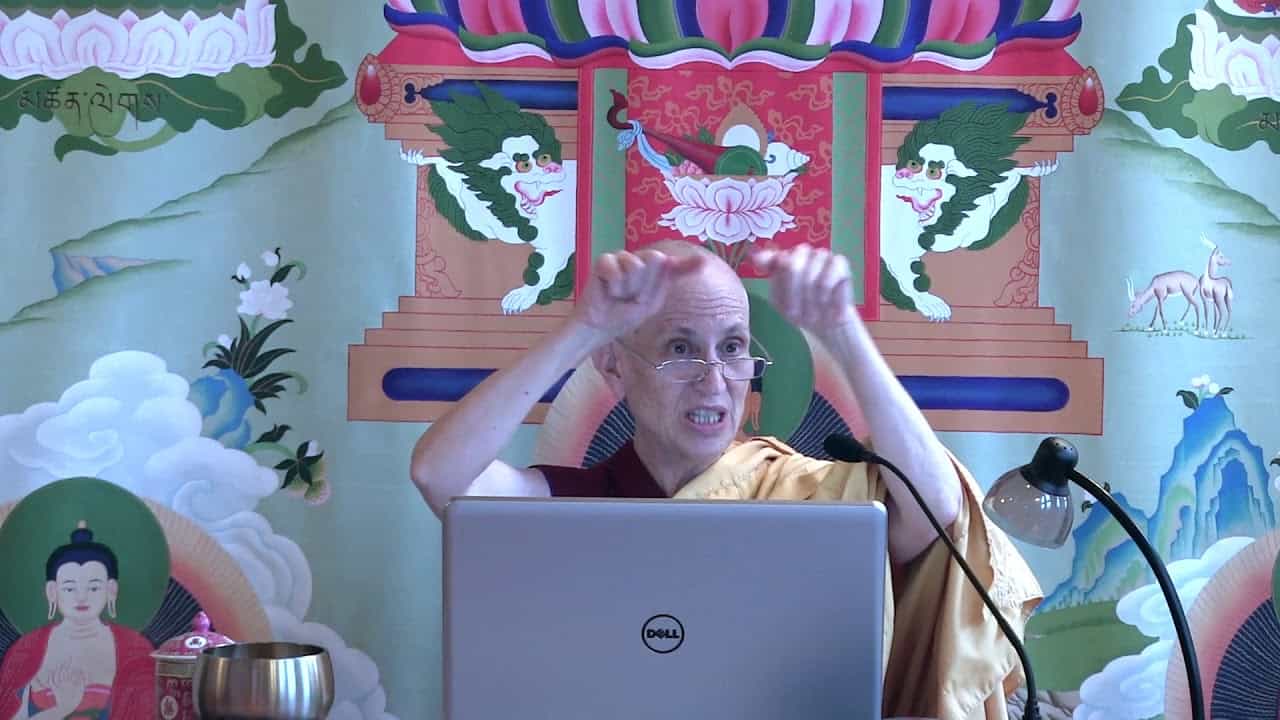Identifying inherent existence
Identifying inherent existence
The text turns to training the mind on the stages of the path of advanced level practitioners. Part of a series of teachings on the Gomchen Lamrim by Gomchen Ngawang Drakpa. Visit Gomchen Lamrim Study Guide for a full list of contemplation points for the series.
- Uniting what we think intellectually and what we feel emotionally
- Recognizing the link between our suffering and the way things appear to us
- The relationship between the basis of imputation and the imputed object
- Explaining the meaning of what is said to be “like an illusion”
- The difference between space-like meditation and illusion-like experience
128 Gomchen Lamrim: Identifying Inherent Existence (download)
Contemplation points
- Why is it that when we truly understand that others do not exist as they appear, our opinions and judgments about them disappear? Why does that understanding lead to having compassion for others?
- What is meant by inherent existence in these teachings, and why does that leave only two options for the way a person relates to their aggregates (identical or separate and unrelated)? Why is there not this same limitation with conventional (dependent) existence?
- Venerable Chodron said that the first point of the four point analysis is really the hardest. It’s about becoming aware of how we perceive things to exist. Until we truly investigate this point deeply, the meditation is very intellectual and its hard for it to begin changing the way we think and interact with the world. Take some time now to reflect. Bring to mind a moment of strong emotion. How does the “I” appear to you in that moment? How are you holding yourself to exist in that moment?
- Consider the example of the cake and how it comes into being: first you have the ingredients, which don’t resemble the batter, which don’t resemble the cake. Each seems distinct and if you didn’t know better, you would think they are completely unrelated. There is no findable cake in the ingredients, nor in the batter, and yet after putting together a collection of non-cake objects in a particular way, you can say you have a cake. After taking some time investigating the emptiness of inherent existence of the cake from the teaching, shift your mind to how the self also does not exist in this way, and yet it appears and functions.
- Why doesn’t a lack of inherent existence mean that things don’t exist at all? If things don’t exist inherently, how do they exist?
Venerable Thubten Chodron
Venerable Chodron emphasizes the practical application of Buddha’s teachings in our daily lives and is especially skilled at explaining them in ways easily understood and practiced by Westerners. She is well known for her warm, humorous, and lucid teachings. She was ordained as a Buddhist nun in 1977 by Kyabje Ling Rinpoche in Dharamsala, India, and in 1986 she received bhikshuni (full) ordination in Taiwan. Read her full bio.


